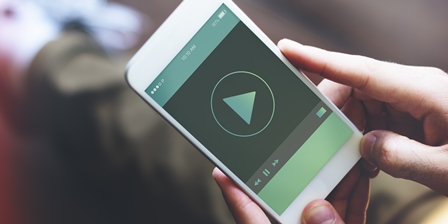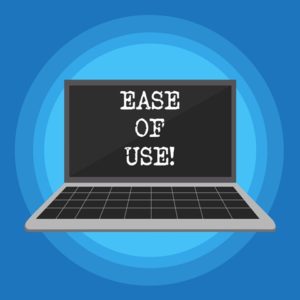Analysis of Movement with Smartphone Video

Physical therapists are movement specialist according to the American Physical Therapy Association. Addressing issues related to the human movement system is what Physical Therapist do. The movement system is collection of systems (cardiovascular, pulmonary, endocrine, integumentary, nervous, and musculoskeletal) that interact to move the body or its component parts.
Visual observation and analysis of movement is critical to solving movement system problems.
Interestingly Physical Therapist have been slow to take advantage of readily available smartphone video technology to document and analyze movement.
During presentations at continuing education course on Gait Analysis and Gait Training I have queried over 800 Physical Therapists. My estimate is less than 10% of attendees report they are using slow motion video analysis in their clinical practice.
In survey of Board certified orthopedic Physical Therapist Craig Hensley Assistant Professor of Physical Therapy Northwestern U found 50% of therapist use slow motion video for management of orthopedic patients. However, they only use slow motion video for less than 25% of their case load.
Utilization of smartphones has integrated deeply into medical care. However, the use of smart phone slow motion video analysis is under-utilized by movement specialist.
There are multiple barriers Physical Therapist face to using smart phone video recordings to manage movement system problems. Common barriers to the use of new technologies are the:
- perceived usefulness
- perceived ease of use.
Perceived Usefulness
Perceived usefulness is the degree to which a person believes that using a new technology or system would enhance his or her job. Smartphone video slow motion technology has multiple uses and advantages.

Smartphone video can increase accuracy of observations of movement
Smartphone video camera samples at a rate of 30 frames per second. It is estimated that human observation of movement samples at a rate of 4 frames per second. When walking the foot is on the ground approximately 0.6 seconds (half a second). Analysis of walking there are 4 events when the foot is on the ground for the half second – foot strike; foot flat (heel and forefoot on ground; heel off; and toe off. In a half a second we are trying to observe 4 events or frames. During the same 0.6 seconds we need to observe what the trunk, hip, and knee are doing, and what the other leg is doing. Slow motion video and frame by frame playback can improve accuracy of motion analysis.
Smartphone video can increase level of patient’s engagement in solving pain and movement system problems
Over the years of working with patients I have observed some patients get better when they get an MRI or a radiograph. Obviously, the radiograph is diagnostic and is not an intervention to help tissue heal. However, patients report feeling better and less pain - after a radiograph. From the patients’ perspective a picture can validate their concerns. When healthcare professionals explore and validate patient’s concerns communication improves as well as the outcomes.
Simply having increased self-awareness can be therapeutic. Video recording can facilitate an individual’s self-awareness of:
- What movements and specific directions of movements provoke symptoms
- How altering movements and specific directions of movements can decrease or eliminate symptoms
Self-Awareness

Altering or changing a movement system impairment requires two steps. First step is recognizing the habitual deviant movement. The second step is selection of an intervention to alter the deviant movement. Habitual or faulty movements can occur as an automatic compensation for pain associated with a previous injury. Gait deviation or compensations can continue even though the injury has healed, or the impaired joint has been surgically replaced. Long-established habits make the first step the more challenging step. Seeing a video of yourself accomplishes the first step.
When a patient sees their video the most common response is “I did not know I was that fat”. For some patient’s verbalization of this self-awareness provides an opportunity to begin engaging in weight reduction. This intervention is very important in management of movement system problems.
Smartphone video can improve communication regarding movement system problems
We tend to have a preferred learning sense. Some individuals are considered auditory learners they need to hear new information. Some individuals prefer to feel things when learning they are kinesthetic learners. Some individuals are considered visual learners they need to see the new concept.
A picture is worth a thousand words, particularly for individuals who are considered visual learners.
The use of smart phone video of patient’s movement is analogous to the use of radiographs and MRI images. If video of patient’s deviant movement is shared among healthcare team members all team members can see the same movement system problem.
I am only conversant in English. Whenever I have a patient who does not speak English, I break out my smart phone. Being able to point at a visual moving image and comment in short one-word sentences can enhance communication when verbal language is impaired.
Patients can upload a video selfie so that a Physical Therapist can provide a telehealth or PT-Online visit.
There are many other perceived benefits of video recording of individuals with movement system problems including: obtaining consults from peer Physical Therapist, using patient data for Physical Therapist continuing education, documentation to health insurance companies, and providing patients with instructions on their self-management program (home exercise program).
Perceived ease of use

There are many issues and potential barriers related to the perceived ease of use of smartphone video technology by Physical Therapists.
The universal problem and often the source of burnout for healthcare providers is cumbersome burden or ever-expanding requirements for documentation. When it comes to the use of smartphone video recordings of patient’s movements there is barrier of uploading the video recording into electronic medical records. I have yet to find an electronic medical system that make it easy to upload video recording of patient walking or running.
The technical know-how to upload video to electronic medical records is currently available. This is a barrier that can be solved if the stakeholders involved with electronic medical records put their creative abilities together. If the barriers related to ease of uploading video recordings to a electronic medical record can be addressed the added value will be fully appreciated.
“Problems are a chance for us to do our best” Duke Ellington
If a picture is worth a thousand words what is a video recording worth?
A on demand video webinar exploring this topic is available at Plus by Physiopedia entitled “Indications, Benefits, & Barriers of 2D Motion Analysis”
Use this code – “Damien25” for a 30% discount to access this webinar as well as the more than 500 continuing education webinar courses available at Plus by Physiopedia. This is the link http://bit.ly/DAMIEN25 with the 30% discount code embedded.
Damien Howell Physical Therapy – 804-647-9499 – Fax: 866-879-8591 At-Home, At Office, At Fitness Facility – I come to you, I do home visits Damien@damienhowellpt.com

